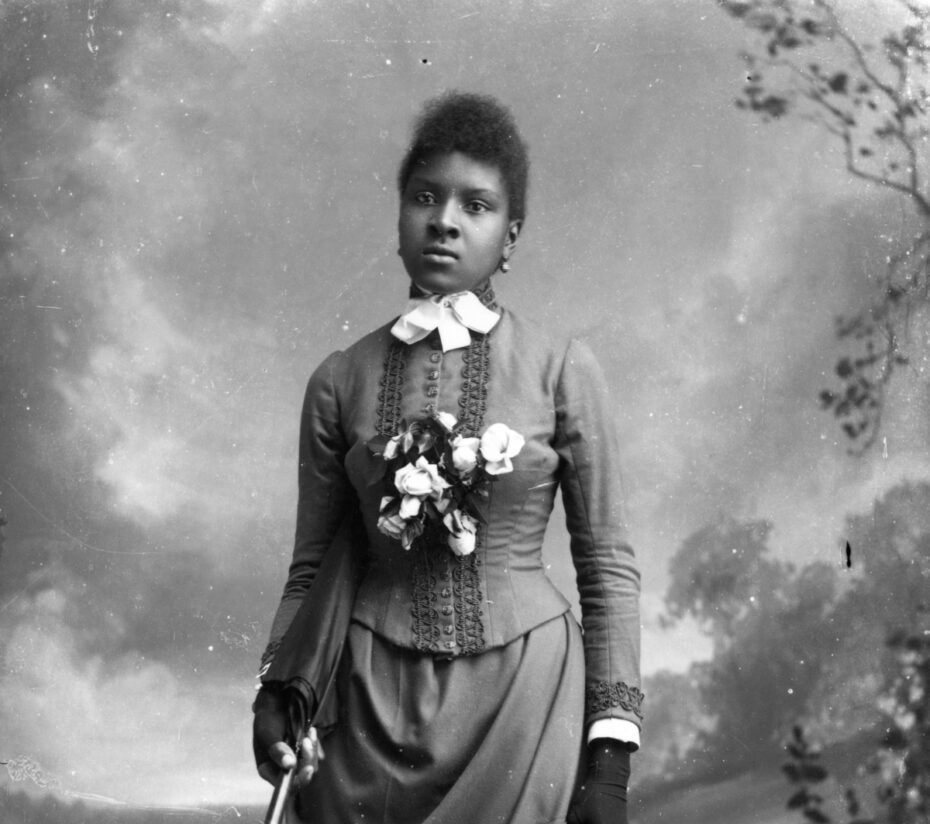There is a sizeable gap in the documentation of Black American history. So often, what we see of Black history is limited to slavery and the Civil War or the Harlem Renaissance and the civil rights era. Record of African Americans during the Gilded Age – prospering African Americans – is noticeably lacking, forgotten in the attic of history. Literally. In 1946, some 2,000 glass negatives were discovered in the attic of a home once belonging to a studio portrait photographer by the name of Alvan S. Harper. The Philadelphia-born spent over 20 years in Tallahassee, Florida, offering his services to the local population, including an African American middle class of business owners, teachers and leaders the community. A lot of Harper’s best work was lost after his death when the bulk of his studio’s negatives were mistaken as trash and destroyed. What was discovered three decades later was turned over to the State Library and is now in the care of the Florida Photographic Collection. I was particularly taken with the women in the collection, and decided to put the spotlight on them. While some efforts were made to circulate the prints in the community for identification, most of the individuals in the portraits remain nameless.
Source: Messy Nessy



Just a few years after the Emancipation Proclamation was signed in 1863, the Gilded Age ushered in a Black aristocracy, made up of Black Americans who managed to amass wealth they’d previously been barred from.
Industrialization and the railroad boom opened up business opportunities across the US. Many of the Black elite were made up of the “shopkeeping aristocracy” who owned retail and grocery stores and pharmacies, according to Peterson.
“After the Civil War, there was an incredible explosion of modern industry, technology, and science, which fueled the money that makes the Gilded Age,” Peterson said. “Black families of wealth emerged in this context.”
Thomas Downing, the son of formerly enslaved parents, moved to New York City and became a savvy businessman who popularized oysters, which had once been considered common food. In 1825, he opened the upscale Thomas Downing Oyster House — a restaurant so popular that Downing was nicknamed “the “New York Oyster King.”
Downing was one of the wealthiest people in New York City at the time of his death in 1866, even though he was prohibited from acquiring US citizenship until the Civil Rights Act of 1866 was passed, just one day before he died.
There was also Pierre Toussaint, who was born a slave in Haiti and was eventually freed in New York City. He became a highly sought-after hairdresser among the society’s upper crust, and used his new wealth to support orphans and immigrants gain education and employment.
Black women also gained financial and social power. Mary Ellen Pleasant became a self-made millionaire after she moved to San Francisco, following the glimmer of the California Gold Rush. While she worked as domestic help, she listened to the wealthy men she served as they exchanged information on making proper investments and managing money.
Pleasant used that knowledge to buy up boarding houses, laundromats, restaurants, and Wells Fargo shares, becoming a famous figure in San Francisco.
Not everyone lived lavish lifestyles. The Gilded Age was also notorious for having the most significant wealth inequality in American history. The vast majority of workers, especially Black Americans and immigrants, faced extreme poverty and harsh working conditions in factories.
“Chattel slavery is dead, but industrial slavery remains,” economist and New York mayoral candidate Henry George said in 1886.
Even those who did manage to gain wealth faced pervasive systemic inequities. White society largely viewed Black Americans as “a homogenous mass of degraded people,” according to historian Willard B. Gatewood in his book, “Aristocrats of Color: The Black Elite.”
“Even exceptional Blacks were considered inferior to whites,” Gatewood wrote.
But there was also a “certain amount of cooperation and interracial alliances between Blacks and whites,” Peterson told Insider, describing how professional relationships enabled Black Americans to climb the ranks within businesses. She also pointed to the King’s Daughters, a nationwide charity organization where white and Black women worked together to help those in need.
Peterson said the emergence of the Black elite is inextricably tied to the burgeoning political and social activism in the 20th century, as exemplified by the 1909 founding of the National Association for the Advancement of Colored People, the political magazine The Crisis, and the Harlem Renaissance. “None of this could have happened without having had the 19th century Black elite,” Peterson said.
Source: Business Insider


Leave a comment